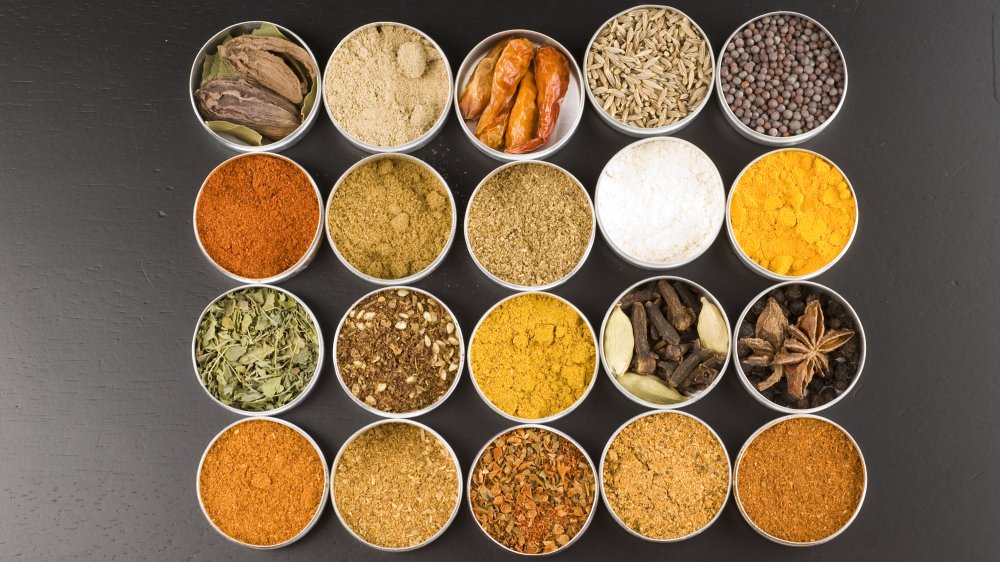These New Spice Blends Honor The Late Chef Floyd Cardoz
On October 12, The New York Times announced that the collaboration between the late Indian restaurateur Floyd Cardoz and Burlap & Barrel, a Queens-based spice company, has finally come to fruition. Before Cardoz died due to COVID-19 in March, he was developing a range of masala blends consisting of a Goan masala, a Kashmiri masala, and a Garam masala. Under the appropriate name of Floyd Cardoz Masalas, Burlap & Barrel now offer each in 2.2 oz jars for $11.99 or all three for $33.99. Burlap & Barrel add that a portion of the proceeds will go to the causes which Cardoz supported.
The spice range serves as a fitting tribute for Floyd Cardoz, who, as The New York Times wrote, was "the first chef to bring the sweep and balance of his native Indian cooking to fine dining in the United States." While Western chefs were already experimenting with the occasional sprinkle of Asian ingredients, Cardoz went further, planting American dishes firmly inside an Indian palette.
In Eater's report on the Floyd Cardoz Masalas, the three that have been released were blends personally chosen by Cardoz. More are said to follow. Moreover, we learn the more personal dimensions to an already personal project. The released blends were pushed forward by Burlap & Barrel co-founder Ethan Frisch, a one-time underling of Cardoz, and Cardoz's wife, chef Barkha Cardoz. A similar project launched by Barkha Cardoz is www.floydcardoz.com, a website dedicated to housing Floyd Cardoz's legacy.
Bringing flavor to a high profile
The birth of the masala project, in particular, came from a personal space for Barkha Cardoz. "There would be so many occasions when I would go to the Indian store and buy spice blends," she explained to The Takeout, "and he could tell I had used a blend from the store because it would have only one tone."
The problem with these store-bought masalas is that there isn't a single defining masala that all masalas must copy. As Epicurious admits in the opening scrawl of their garam masala recipe: "[garam masala] changes from region to region within northern India and can be varied according to whim." This, of course, makes buying any store-branded masala — and spice blends in general — a tricky business, because in most cases, there is an opacity to how it actually tastes. The best example of this is given by another Epicurious piece about a grocery store's curry powder that listed its ingredients as "turmeric, red pepper, and... 'spices.'" With this opacity, mass-produced blends can easily hide behind one-flavor blends, which always annoyed Floyd Cardoz.
In Food & Wine, Barkha Cardoz explained how rather than suffer from subpar spice blends, a subject Floyd Cardoz was very passionate about, he simply whipped up his own blends for her: "[Floyd] just wanted everyone to love Indian flavors as much as he did." Now, with these blends produced, more people can learn to appreciate the subtlety of flavors that balanced his work.

